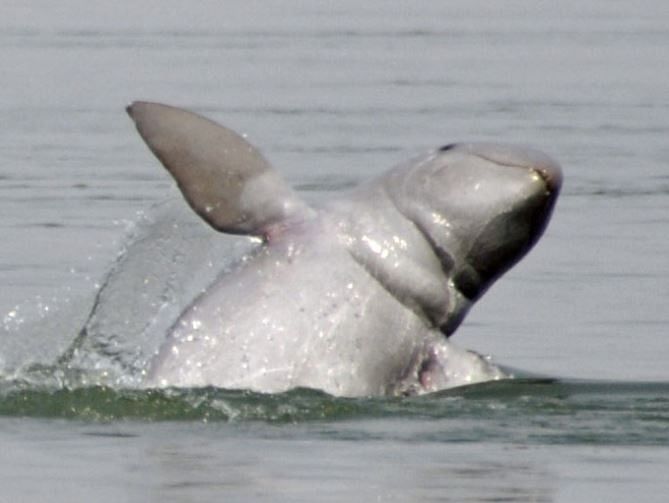
The famous Chilika Lake, the largest brackish water body of Asia and the first Ramsar site of India, is now home to 160 Irrawaddy dolphins, considered a rare species, from just 20 in 2000 when researchers from the Indian Institute of Technology-Madras (IIT-M) were asked to restore the waterbody.
The researchers conducted geotechnical, hydraulic, and satellite imagery studies and developed a dredging methodology with minimum impact on the lake ecosystem that has led to an exponential increase in the population of the Irrawaddy dolphins and a seven-fold increase of fish catch people living in villages near the lake.
The project was taken up in 2000 and it took 20 years for the population of the Irrawaddy dolphins, which are found in coastal areas in South and Southeast Asia, to increase substantially.
The lake successfully was restored and removed from the threatened list (Montreux record) 1st from Asia, while the Chilika Development Authority also received the Ramsar Wetland Conservation Award and Evian special prize 2002 for outstanding achievement.
“The project lasted for 20 years and the dolphin needs brackish water and the salinity had to be restored along with sufficient fish for the dolphins. We did a lot of research and took measures to increase the population of Irrawaddy dolphins. Our efforts have now borne fruit and the population of the dolphins is 160 now,” Prof. R. Sundaravadivelu, Institute Chair Professor, Department of Ocean Engineering, IIT-M, told DH.
Prof. Sundaravadivelu, who spearheaded the project, also said they were surprised with such a massive increase in the population of the Irrawaddy dolphins. “We are in the process of conducting more studies and have been doing necessary interventions in the last 20 years,” he added.
Spread over Puri, Khurda, and Ganjam districts of Odisha, the Chilika Lagoon is over 4,000 years old and the highly productive ecosystem of the lake supports the livelihood for fishermen and also acts as drainage for Mahanadi river basin.
The lake was in a degraded condition and included in the threatened list (Montreux Record) by Ramsar Convention in 1993. This warranted urgent action for the restoration of the lake.
The hydrodynamic regime of the lagoon was affected due to the shifting of the mouth towards the northeast and subsequent reduction of seawater into the lake. Consequently, the ecology, biodiversity, and economy of the area were also affected. The present study deals with the intervention carried out in October 2000 to open the mouth 18 km south of the shifted mouth.
“The Chilika Lake was restored with a cost of Rs.10 crores by opening the mouth and other related works in six months’ time which has resulted in fish catch worth Rs.100 crore and revenue of Rs. 35 crore due to Tourism every year.” Prof Sundaravadivelu added.
IIT Madras developed the dredging methodology identifying the location of dredging along with disposal and selection of suitable dredger with minimum impact on the ecosystem.
Based on the outcome of this successful hydrological intervention by IIT Madras undertaken under the aegis of the Chilika Development Authority (CDA), the flood inundation and freshwater weeds are reduced. The hydrological intervention restored the lake ecosystem and ameliorated the biodiversity, the IIT-M said in a press release.